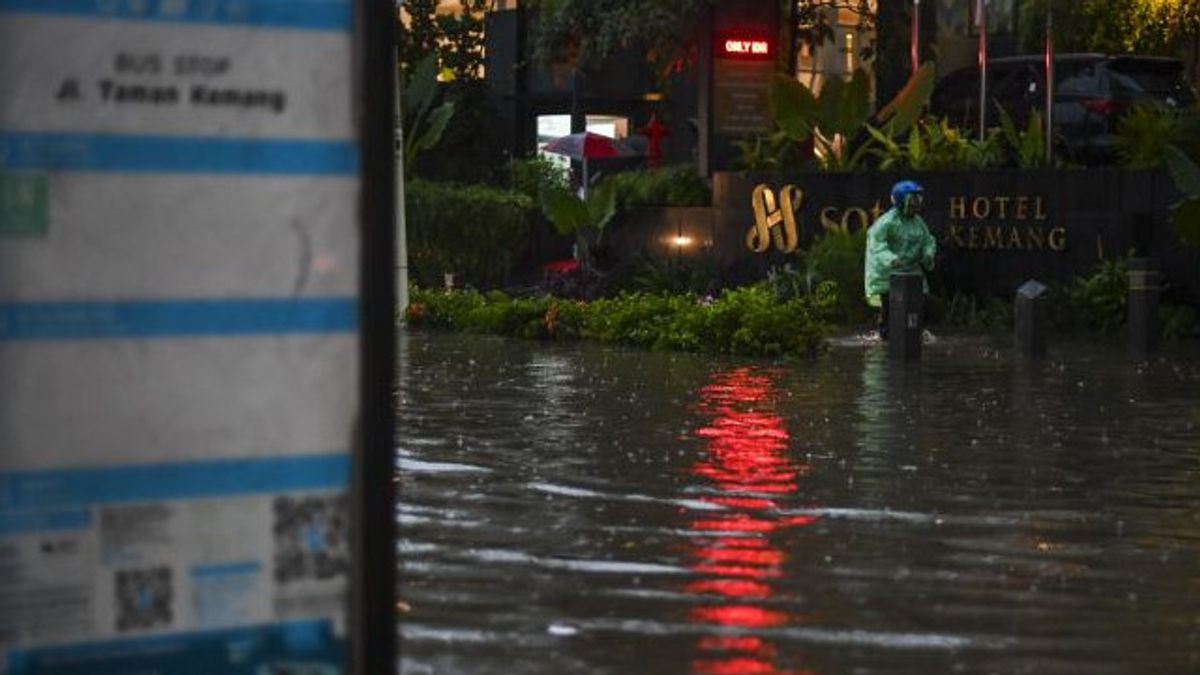JAKARTA - The DKI Jakarta Water Resources Service (SDA) deployed 455 stationary pumps and 457 mobile pumps to suck up puddles and floods at a number of points in the capital city.
"We are coordinating with BPBD, the Department of Highways, the Gulkarmat Service to extract inundation together with the lurah and sub-district heads," said Secretary of the DKI Natural Resources Agency Dudi Gardesi in Jakarta, Wednesday, October 5.
The details are reported by Antara, the Natural Resources Service deployed 138 stationary pumps in 46 West Jakarta areas, 87 units in 41 South Jakarta areas, 40 units spread across 21 East Jakarta areas, 95 units spread across 23 Central Jakarta Regions and 95 units spread across 23 North Jakarta Regions.
For mobile pumps as many as 116 units in West Jakarta, 75 units in South Jakarta, 93 units in East Jakarta, 64 units in Central Jakarta and 109 units in North Jakarta.
The pumps were also deployed to suck up puddles and floods, one of which was flooding in Kemang and Pondok Karya in South Jakarta.
In addition to pump equipment from the Natural Resources Service, hundreds of officers for handling public infrastructure and facilities (PPSU) and the ranks of the DKI BPBD were also deployed in handling inundation.
Meanwhile, DKI BPBD noted that as of 06.00 WIB this Wednesday, out of 81 RTs affected by the flood, currently there are nine RTs with water levels from 20 to 80 cm.
Floods occurred due to high rainfall that caused the overflow of the Pesanggrahan River, Krukut River and Cipinang River.
Previously, on Tuesday (4/10) afternoon heavy rains flushed Jakarta causing inundation and flooding in 81 RT out of 30,470 RT in Jakarta.
The data on areas affected by the flood to a height of one meter include North Cipete Village in areas directly adjacent to Krukut River and Pela Mampang Village in areas directly adjacent to Krukut River and Mampang River.
The speed of receding flooding that submerged a number of points in Jakarta since last night was called the Governor of DKI Jakarta Anies Baswedan due to the presence of infiltration wells.
Anies said that last night's flood hit the basin area. When heavy rains arrive, it is difficult for water to flow downstream because it is surrounded by a higher territorial boundary around the area.
So, according to him, the most appropriate flood response solution in the basin area is the placement of infiltration wells that make water seep into the ground.
The English, Chinese, Japanese, Arabic, and French versions are automatically generated by the AI. So there may still be inaccuracies in translating, please always see Indonesian as our main language. (system supported by DigitalSiber.id)












